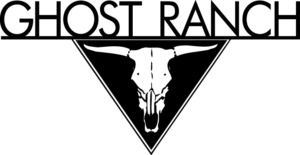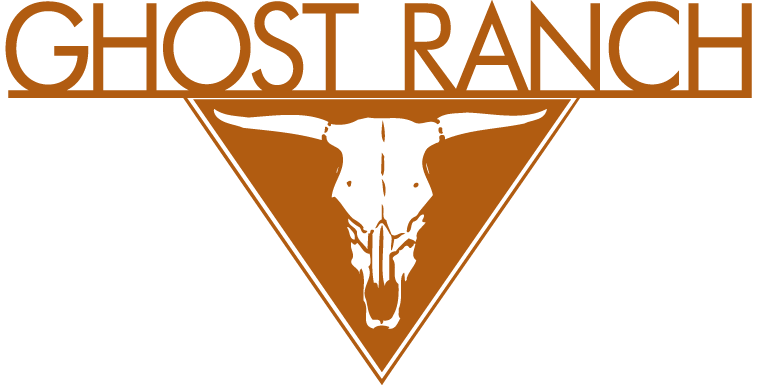Georgia O’Keeffe
Part of Our Past…

“Georgia O’Keeffe on her portal,” Abiquiú, New Mexico, 1960, by Tony Vaccaro. Used with permission.
Georgia O’Keeffe and Ghost Ranch
Early Life
In 1929, Georgia O’Keeffe traveled to Taos at the invitation of friends Dorothy Brett and Mabel Dodge Luhan. It was there that she first heard of Ghost Ranch and once even caught a tantalizing glimpse of it from a high plain. In 1934, she finally visited the ranch but was dismayed to learn that it was a dude ranch owned by Arthur Pack and Carol Stanley. However, a place was available for her that night in one of the cottages and, due to another guest’s health emergency, O’Keeffe stayed the entire summer at the ranch.
This established a pattern she would follow for years, summers at Ghost Ranch exploring on foot and on canvas the beauty of the place, winters in New York. Because she was basically a loner, she sought lodging at the ranch that was somewhat isolated from the headquarters area. Pack offered to rent her his own residence called Rancho de los Burros. This suited her very well. One spring, O’Keeffe arrived unexpectedly and found someone else lodging at Ranchos de los Burros. Feeling a sense of ownership, she demanded to know what those people were doing in her house. When Pack pointed out that it wasn’t her house, she insisted that he sell it to her. Thus, in 1940, she became the owner of a very small piece of Ghost Ranch land: a house and seven acres. In later years she told a ranch employee doing roadwork near her home, “I wanted enough land to keep a horse. All Arthur would sell me was enough for my sewer!”
The Move to Abiquiu
But Rancho de los Burros was a summer place and also a desert one. O’Keeffe wanted a garden and a winter home. Eventually, she bought three acres in the village of Abiquiu with a crumbling adobe home. She spent three years remodeling and rebuilding the house before it was fit for human habitation. After her husband, Alfred Stieglitz, died, O’Keeffe left New York to make Abiquiu her permanent home. (While both houses are owned and managed by the Georgia O’Keeffe Museum, only the Abiquiu Home and Studio is open for public tours. Visit The Georgia O’Keeffe Museum website for more information.)
The Presbyterians
However, from the very beginning of this new relationship, the Presbyterians respected and tried to preserve the privacy of their famous neighbor. Visitors were told, as they are today, that Rancho de los Burros was on private land with no public access. Gradually her fears were allayed and the relationship grew warmer. Office personnel sometimes did secretarial work for her; Ghost Ranch folks replaced the pump on her well. O’Keeffe became friendly enough with long-time ranch director Jim Hall and his wife Ruth to have Christmas dinner with them.
Last Years
During the last few years of her life, O’Keeffe was unable to come to Ghost Ranch from Abiquiu. Eventually, she moved to Santa Fe where she died in her 99th year, reclusive to the end. “I find people very difficult,” she once said.
Ghost Ranch gave her the freedom to paint what she saw and felt. Knowledgeable visitors can look around and identify many of the scenes she painted. Red and gray hills like those across from the roadside park south of the ranch headquarters were frequent subjects. Kitchen Mesa at the upper end of the valley is an example of the red and yellow cliffs she painted many times. Pedernal, the flat-topped mountain to the south, was probably her favorite subject. And of course, the Ghost Ranch logo, used on everything from stationery to T-shirts, was adapted from an O’Keeffe drawing the artist had given to Arthur Pack in the 1930′s.
O’Keeffe is spelled many ways throughout the world O’keefe, O’Keefe, OKeefe but the artist is Georgia O’Keeffe.
A Century of O’Keeffe – For more information and history about Georgia O’Keeffe, visit The Georgia O’Keeffe Museum in Santa Fe, New Mexico.
